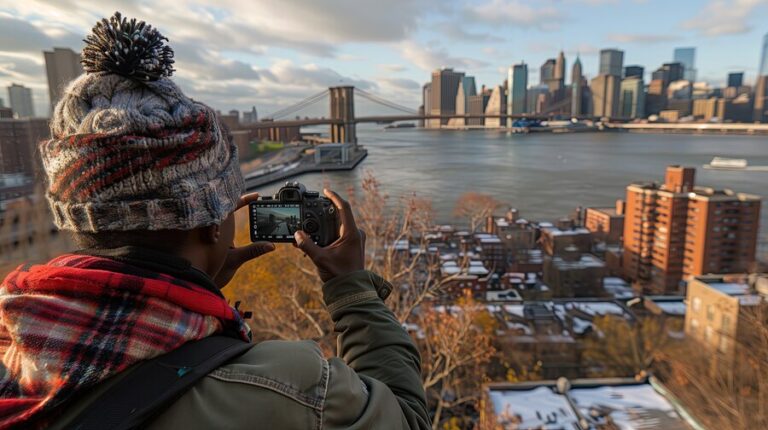Introduction
The French adjective “zoomée” is a feminine form of the past participle of the verb “zoomer,” which means “to zoom.” It is typically used to describe an image or object that has been magnified or enlarged. In a more figurative sense, it can also be used to describe someone who is focused or fixated on something.
Etymology
The word “zoomée” is derived from the French verb “zoomer,” which itself is a relatively recent addition to the language. The first recorded use of “zoomer” dates back to the early 20th century, and it is thought to have originated from the English word “zoom,” which was first used in the late 19th century to describe the sound of a bullet passing through the air.
Usage
The adjective “zoomée” is typically used in a postpositive position, meaning that it comes after the noun that it modifies. For example, one might say “une image zoomée” to refer to a zoomed-in image. It can also be used in a more abstract sense, such as in the phrase “une personne zoomée sur son travail,” which means “a person who is focused on their work.”
Synonyms
There are a few synonyms for the adjective zoomée including:
-
Agrandie: This word means “enlarged” or “magnified” and is a more general term that can be used in a variety of contexts.
-
Grossie: This word means “made bigger” or “increased in size” and is often used to describe physical objects.
-
Amplifiée: This word means “enlarged” or “extended” and can be used to describe both physical and figurative objects.
Examples
-
J’ai zoomé sur la photo pour voir les détails. (I zoomed in on the photo to see the details.)
-
Elle était tellement zoomée sur son livre qu’elle n’a pas entendu son nom être appelé. (She was so focused on her book that she didn’t hear her name being called.)
-
Le professeur a zoomé sur le point important de son exposé. (The professor zoomed in on the important point of his presentation.)
Etymology and History
The etymological roots of zoomée” lie in the French verb “zoomer,” which itself is a relatively modern addition to the language, first appearing in the early 20th century. The term likely derived from the English word “zoom,” which originated in the late 19th century to describe the sound of a bullet passing through the air.
The adoption of “zoomée” into the French language can be attributed to advancements in photography and cinematography, where the ability to zoom in and out on images and videos became increasingly prevalent. As technology evolved, the term found its way into common usage, encompassing both physical objects and figurative concepts.
Contextual Usage and Meanings
In its most literal sense, “zoomée” is used to describe an object or image that has been magnified or enlarged. For instance, one might say “une image zoomée” to refer to a zoomed-in image, highlighting the increased size of the subject.
Moreover, “zoomée” can also be employed in a figurative sense, denoting a person or entity that is intensely focused or fixated on a particular matter. For example, one might say “une personne zoomée sur son travail,” indicating that an individual is deeply absorbed in their work, giving it their undivided attention.
Synonyms and Related Terminology
The French language offers a range of synonyms for “zoomée,” each conveying slightly different nuances of meaning. These include:
-
Agrandie: This synonym implies a broader sense of enlargement or magnification, applicable to both physical objects and figurative concepts.
-
Grossie: This synonym focuses specifically on the physical augmentation of an object’s size, emphasizing its increased dimensions.
-
Amplifiée: This term encompasses both the physical and figurative aspects of enlargement, suggesting an expansion or extension of both form and meaning.
Examples and Usage in Context
“Zoomée” seamlessly integrates into various linguistic contexts, providing concise descriptions and nuanced interpretations. Here are a few examples demonstrating its versatility:
-
J’ai zoomé sur la photo pour voir les détails. (I zoomed in on the photo to see the details.)
-
Elle était tellement zoomée sur son livre qu’elle n’a pas entendu son nom être appelé. (She was so focused on her book that she didn’t hear her name being called.)
-
Le professeur a zoomé sur le point important de son exposé. (The professor zoomed in on the important point of his presentation.)
These examples illustrate the adaptability of “zoomée” in describing both literal and figurative magnification and focus.
Conclusion
The French adjective “zoomée stands as a testament to the dynamic nature of language, evolving alongside technological advancements and embodying the concepts of enlargement and focus. Its multifaceted applications in both literal and figurative contexts underscore its versatility and utility in diverse linguistic settings. Whether describing an enlarged image or a person deeply immersed in a task, “zoomée” provides a precise and impactful means of communication.














+ There are no comments
Add yours